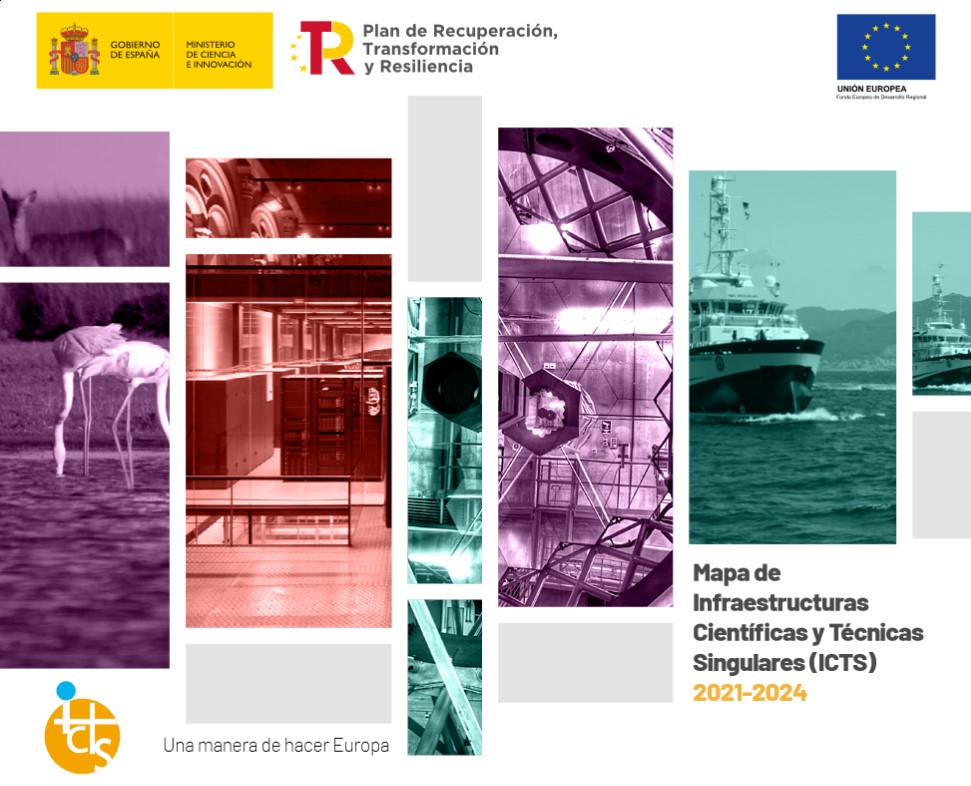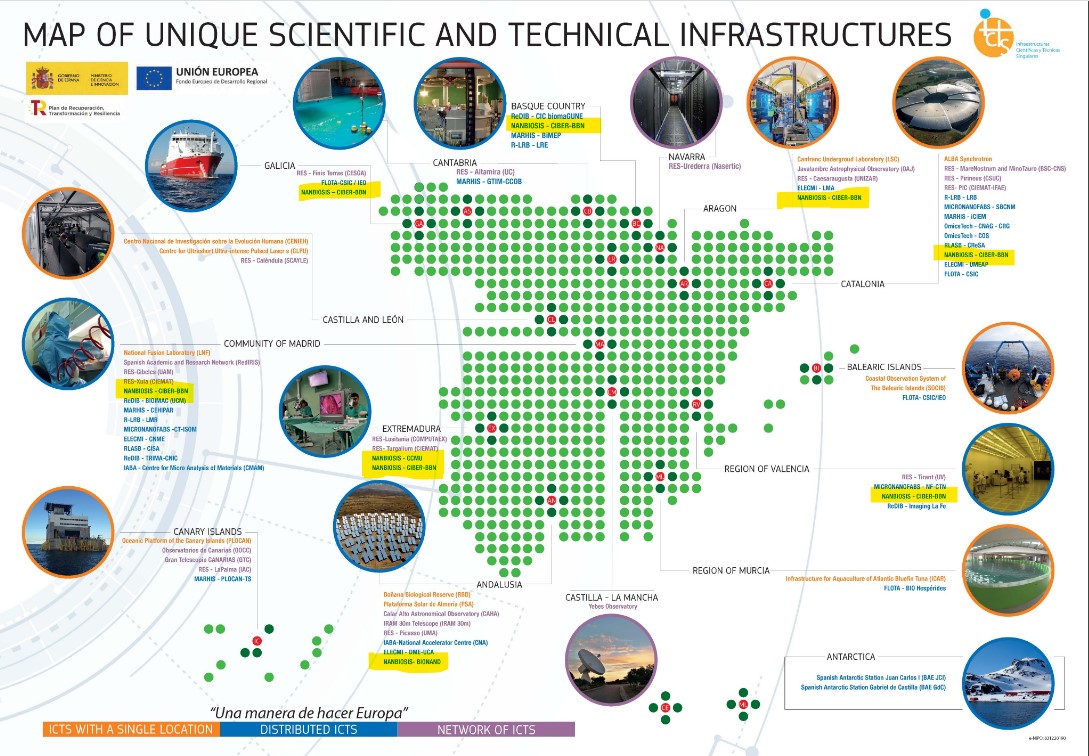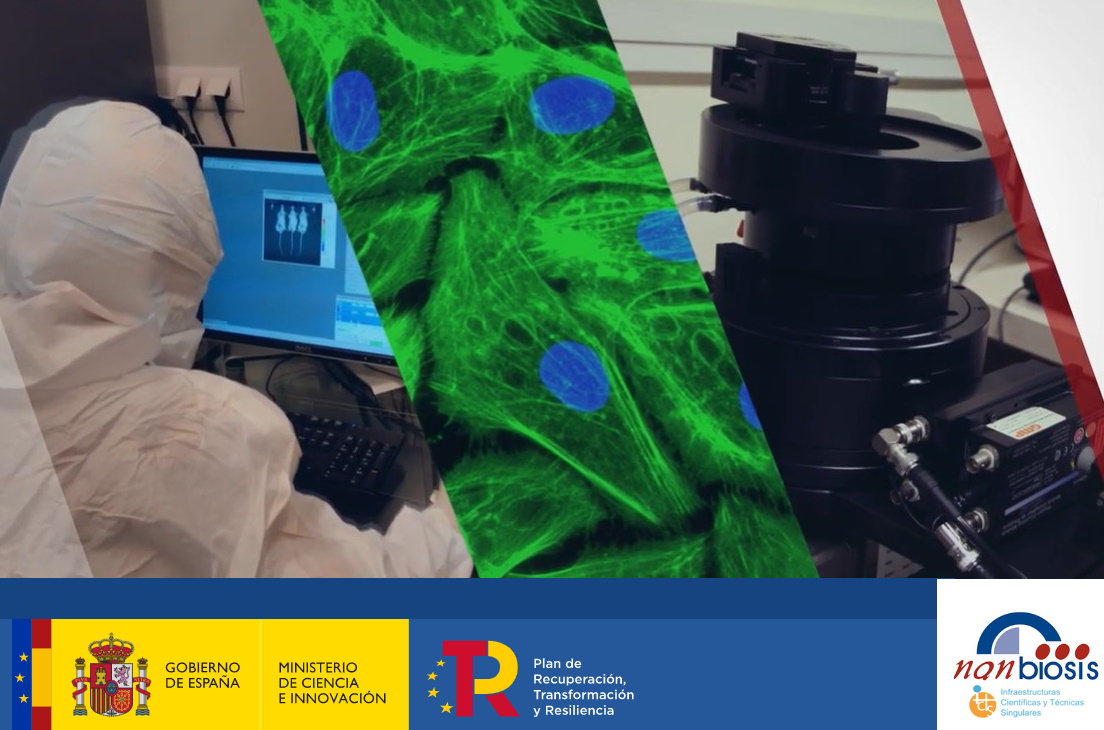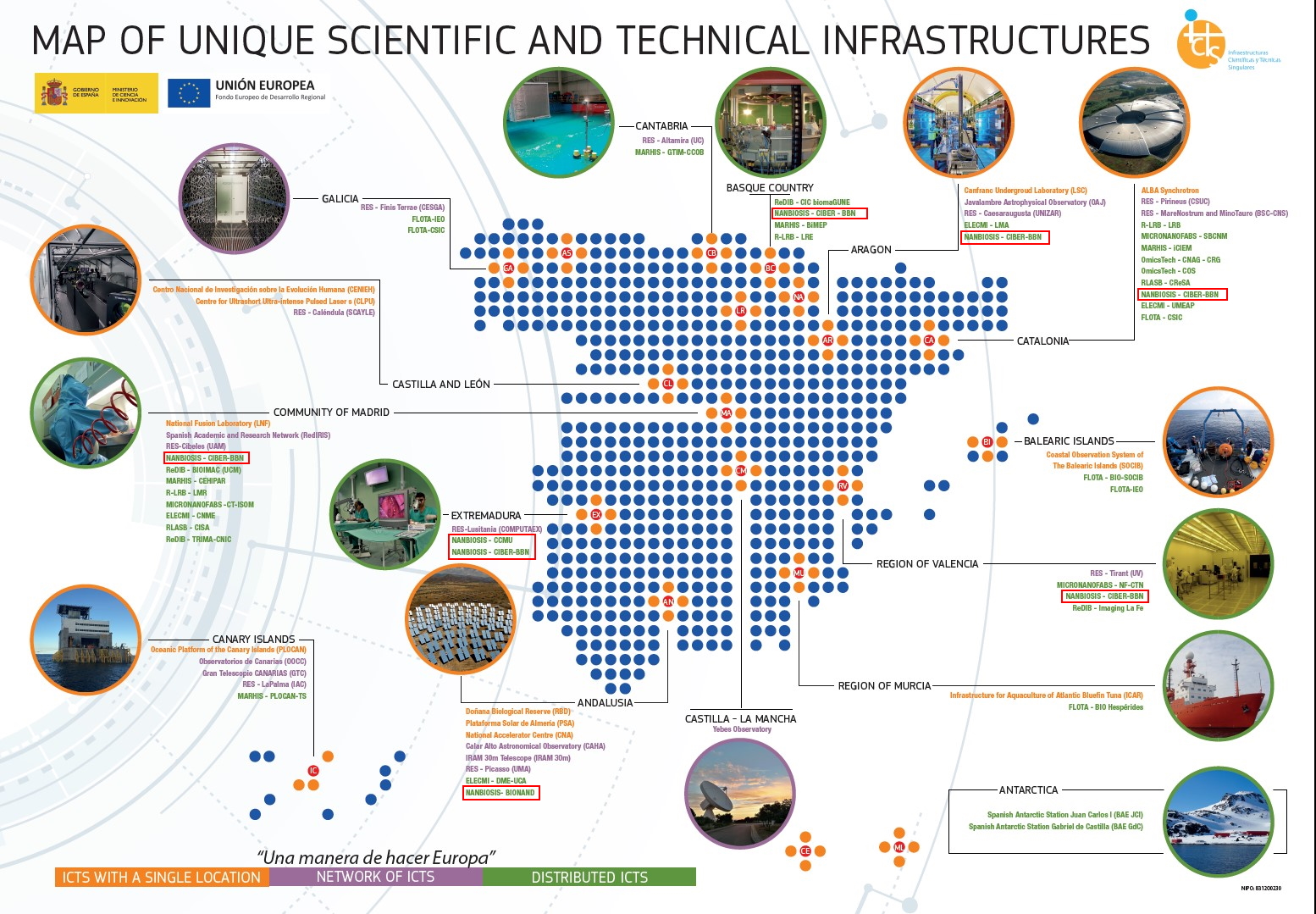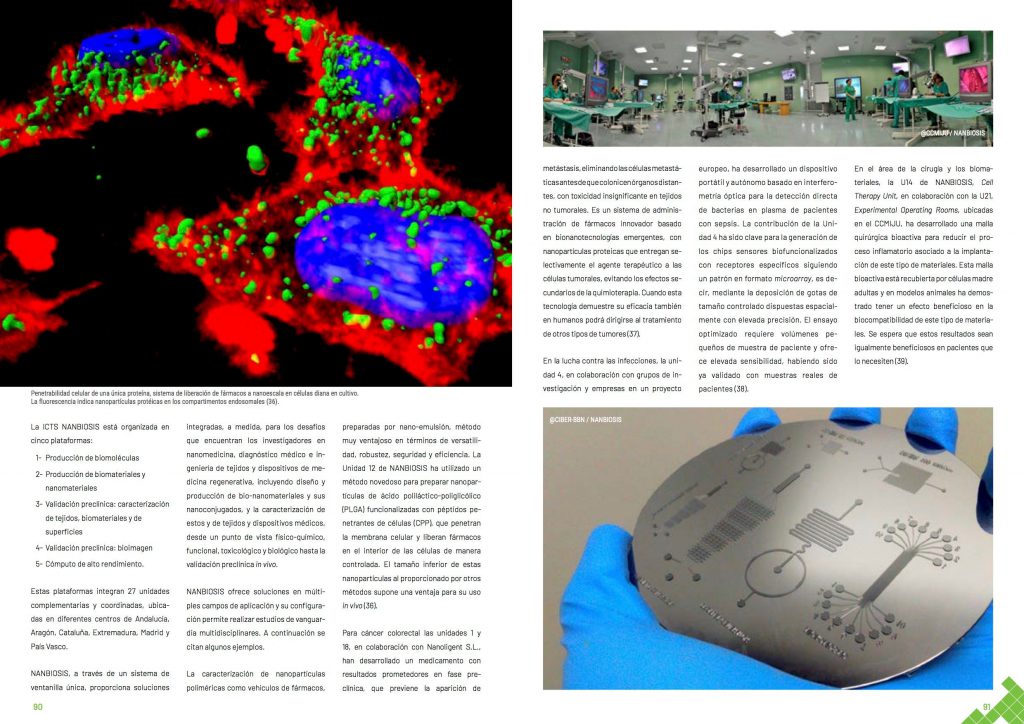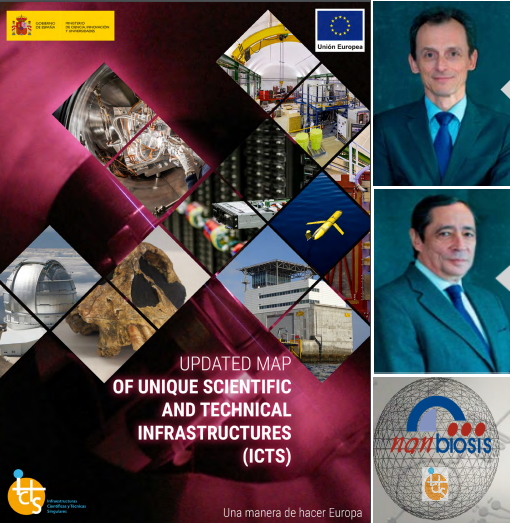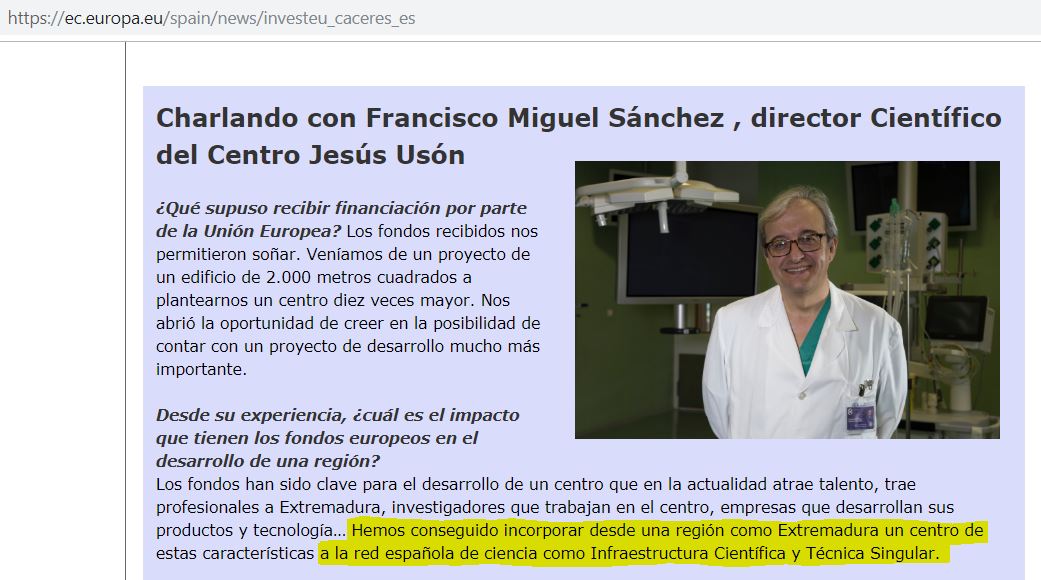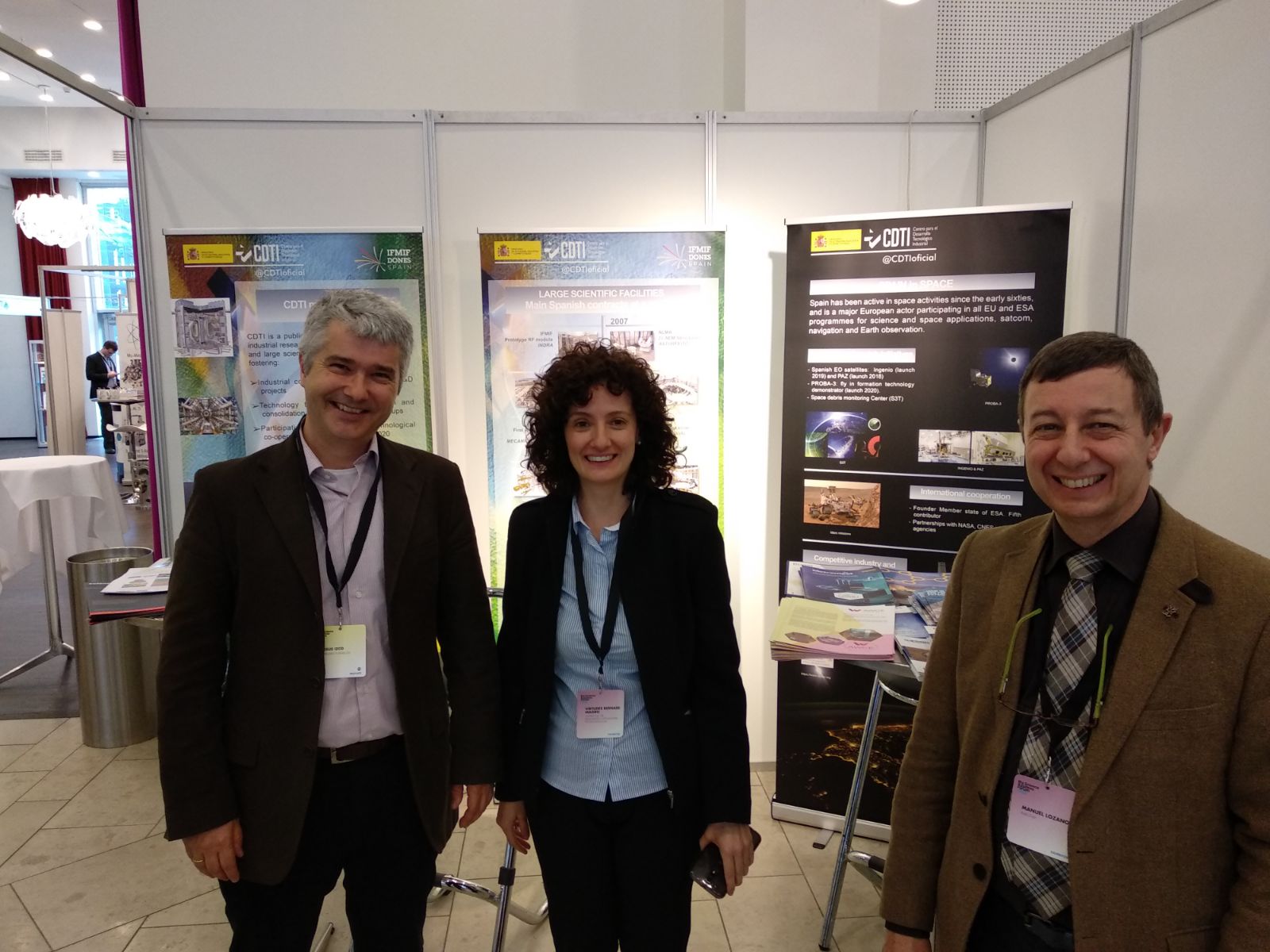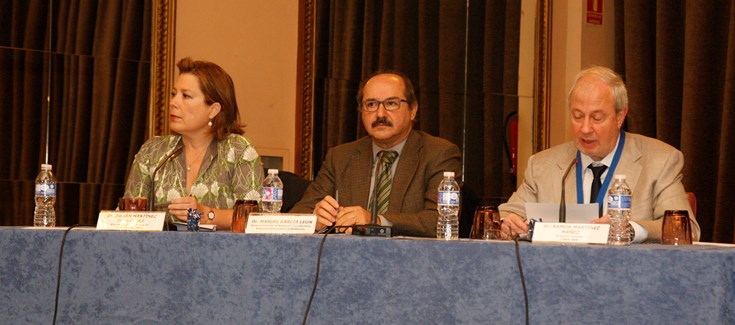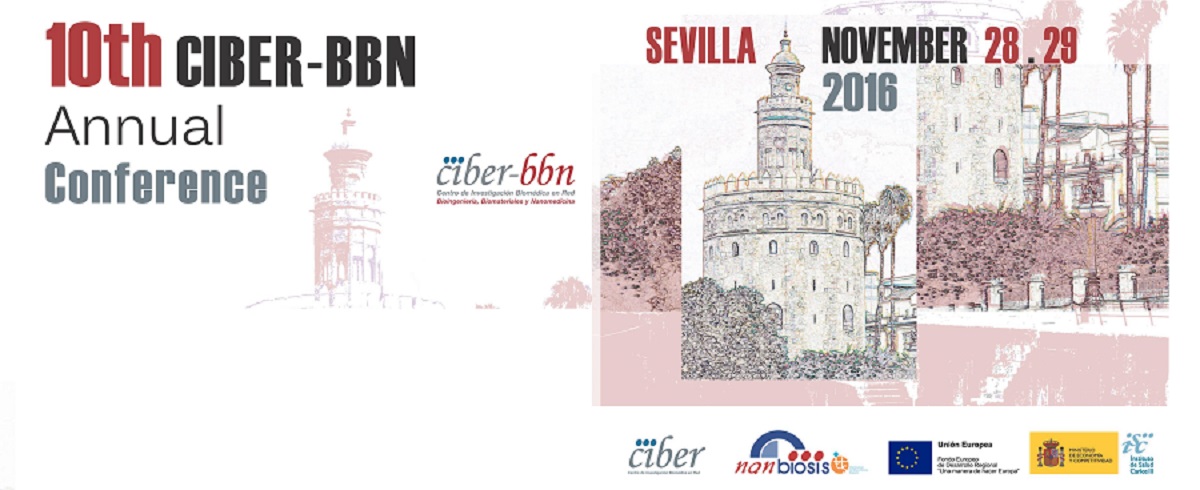NANBIOSIS in the NEW BOOK of the Unique Science and Technology Infrastructures (ICTS)
We are pleased to inform that the new book of Unique Scientific and Technical Infrastructures (ICTS) has been published by the Spanish Ministery of Sciencie and Innovation with the collaborations of the ICTS. You can download it download it here.
The Spanish Map of Unique Science and Technology Infrastructures (ICTS, in Spanish) , goups biomedical technologies, cleanrooms, supercomputers, advanced lasers, telescopes, underground laboratories, synchrotrons, particle accelerators, biological reserves, solar, oceanic and hydraulic platforms, oceanographic research ships, and polar bases in Antarctica. A total of 29 ICTS, made up of 64 infraestructures, allow for ambitious research projects that attract first-rate talent and enhance the technological and innovative industry capacities.
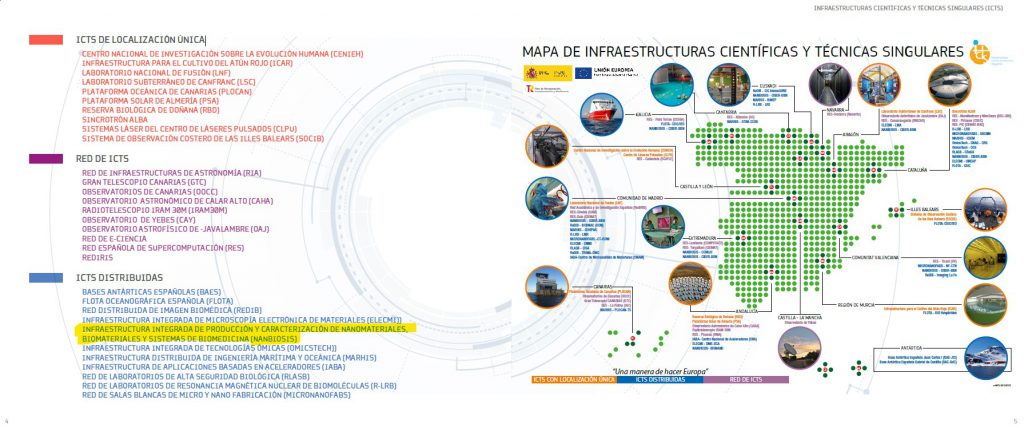
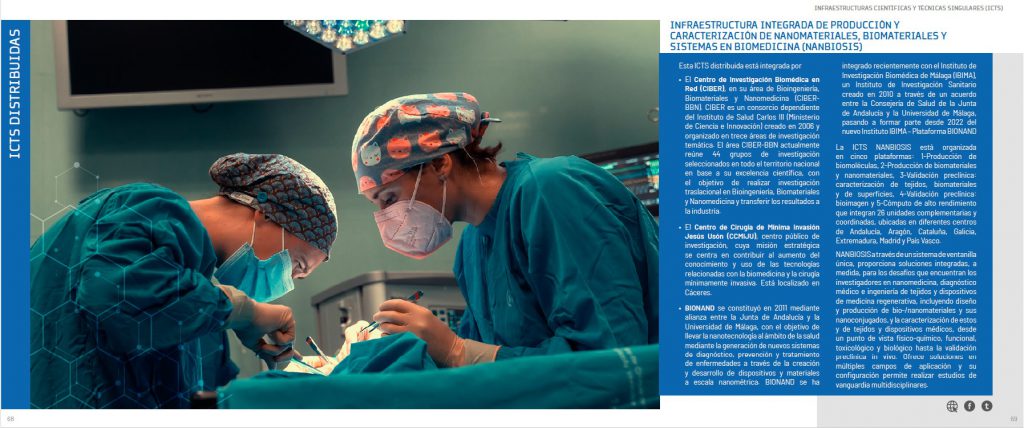
As Diana Morant, Spanish Minister of Science and Innovation says in its prelude “The Unique Science and Technology Infrastructures (ICTS), are crucial for the current country project around science and innovation that we are building together: administrations, research and technology centers, companies and society. I encourage you to go through the pages of this book and discover avant-garde facilities that represent the excellent scientific and technological capabilities that exist today in Spain.”
